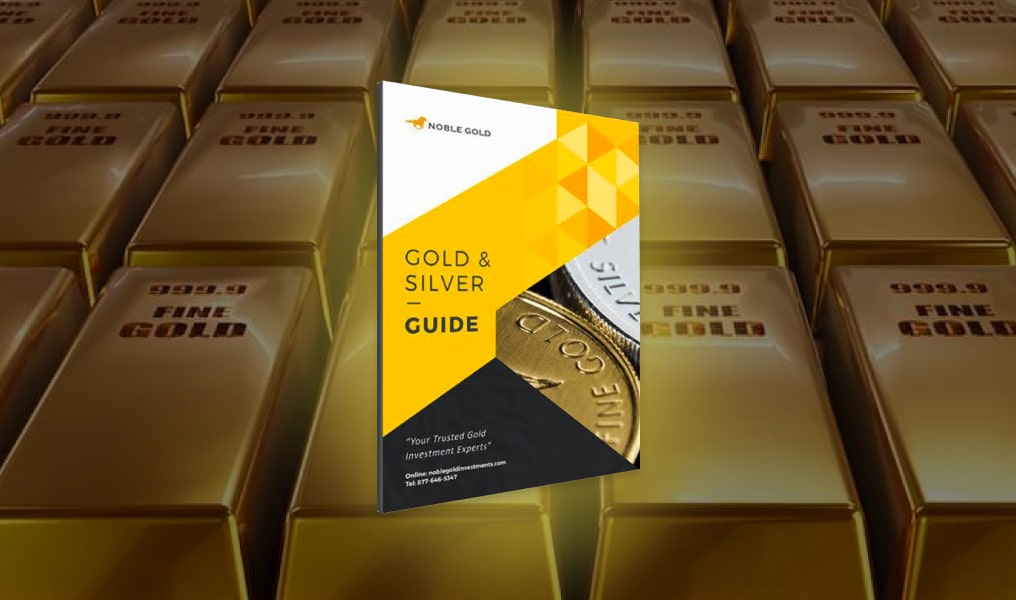Whether it’s a cherished family photo or a prized piece of jewelry, we all own items that have special meaning to us. Some of these items have sentimental value beyond their monetary value and are associated with personal memories and emotions. On the other hand, there’s ‘true value,’ a more objective measure determined by tangible factors such as the demand for an item, its scarcity, and its quality.
This complicated dance between the sentimental and the objective, the personal and the market-driven, shapes our understanding of value in fascinating ways. Keep reading to understand the differences between sentimental and true value.
What Is Sentimental Value?
Sentimental value is rooted in personal or emotional associations with a particular item, not related to its material worth. It reminds us that value isn’t always about price tags or market worth but also about the personal significance and emotional connections we associate with the objects in our lives.
What Could Be Considered Valuable Sentimental Items?
Personal or emotional associations often spring from interactions with significant people, memorable events, or distinct periods. Family heirlooms might hold emotional, sentimental value, like a grandfather’s watch or a grandmother’s wedding ring. These items might have been passed down through generations, carrying stories, traditions, and memories that make them priceless to the family.
Gifts, particularly those from important people in our lives or received on significant occasions, also often carry high sentimental value. A book gifted by a favorite teacher, a friendship bracelet from a childhood friend, or a simple note from a loved one can all carry immense sentimental value, tangible reminders of our relationships and shared experiences. Such items can provide comfort or evoke strong emotions due to their personal connections.
How Sentimental Value Affects Our Perception Of Worth
Sentimental value adds a layer of emotional depth to an item that can far exceed its objective market value. Some ways sentimental value influences our perception of worth include:
- We often overlook the market value of a possession when it has great sentimental significance.
- Objects with emotional attachment have a higher value to us, regardless of their actual price.
- Memories and personal connections associated with a particular object can increase its perceived value in our eyes.
- Because of emotional attachment, we may overestimate the practical value of family heirlooms or cherished mementos.
- Our perception becomes skewed as we assign a higher monetary value to items that evoke strong emotions or valuable memories.
- Sentimental value can influence our investment decisions and lead us to prioritize sentiment over financial returns.
Exploring True Value
True value, also often referred to as market value, is an objective measure of an item’s worth. Unlike sentimental value, the true value is quantifiable and generally an agreed-upon price.
How True Value Is Calculated
Various factors determine the true value of an item and often reflect the price that an item could reasonably fetch in the current market. Here’s how true value is typically calculated:
- Supply and Demand: These basic economic principles play an important role in determining the true value of an item. High demand combined with low supply can drive up the price of an item and increase its true value. On the other hand, low demand and high supply can lower the true value of an item.
- Quality and Condition: The quality of an item, as well as its condition, can greatly affect its true value. Items of high quality or excellent condition generally have a higher true value. For example, a well-maintained classic car may fetch a much higher price than a similar model in poor condition.
- Scarcity and Rarity: Rare Items often have a high true value. This is especially true for collectibles, antiques, and precious metals.
- Market Trends and Economic Conditions: Broader market trends and economic conditions can also affect the true value of an item. For example, the true value of a home may fluctuate depending on trends in the real estate market and general economic conditions.
Calculating true value requires research, expertise, and sometimes a professional appraisal. It’s important to remember that true value can fluctuate over time as these various factors change. Remember that the true value of an item isn’t static but reflects its value at a particular time in the market.
The Quantifiable Nature Of True Value
True value comes from a clear, market-based valuation. Personal feelings or emotions play no role; instead, it’s all about numbers and statistics. Think of true value as the economic value of an object, determined by market demand, production costs, and consumer benefits.
This valuation relies on objective data that anyone can verify if they look to the right sources. So, unlike sentimental value, the essence of true value lies not in one’s feelings but in the facts that shape the commercial world around us.
Examples Of High True Value Items
Assets with high true value are often characterized by their scarcity, demand, and potential for returns. Some examples of high true value include:
- As a precious metal with limited supply, gold often has a high true value. Not only does its scarcity contribute to its value, but also its universal appeal and wide range of uses, from jewelry to electronics to investments. In addition, gold has always been a reliable store of value, often retaining its value during economic downturns, further enhancing its true worth.
- Real Estate, especially in prime locations, has a high value due to the constant demand for property and the limited land supply. Whether it’s a bustling city center or a quiet coastal resort, prime real estate locations can generate high returns. In addition, real estate can generate ongoing income through rental income, which adds to its real value.
- Stocks represent ownership in a company, and shares issued by successful, profitable companies can have a high value. The potential for income in the form of dividends or capital appreciation can make certain stocks valuable. The value of stocks can fluctuate depending on a company’s performance, the state of the industry, and general economic conditions.
- High-quality works of art and antiques can also have a high value. Factors such as the artist’s reputation, the age of the piece, its condition, and its rarity can contribute to its true value. However, valuing works of art and antiques can be complex and often requires an expert’s opinion.
- Certain collectibles, such as vintage cars, rare stamps, or limited editions, may also have a high actual value. Like art and antiques, the value of collectibles can be influenced by factors such as rarity, condition, and demand among collectors.
Understanding The Differences Between Sentimental Value And True Value
Sentimental and true values play an important role in how we perceive and value objects, but they differ greatly in their nature and effects. Understanding the difference between sentimental and true value can influence our decisions when buying, selling, or keeping items.
Subjectivity Versus Objectivity
One of the main differences between sentimental value and true value lies in their basis. Sentimental value is subjective; that is, it varies from person to person. The sentimental value of an item is based on personal emotions, experiences, and memories associated with it. For example, a simple handmade gift from a child may have immense sentimental value to a parent while having little to no value to someone else.
On the other hand, true value is objective. It does not depend on personal feelings or experiences but is determined by tangible factors such as demand, supply, and quality. True value can be measured, compared, and universally recognized. For example, a gold chain has a true value that the current market price of gold can determine.
Personal Significance Versus Market-Driven Worth
Sentimental value comes from the personal meaning of an object or the emotional connections it has for a person. It’s about the stories, memories, and feelings associated with the object. An item with sentimental value is often priceless to the person who treasures it.
In contrast, the true value is market-driven. It’s determined by economic factors such as the demand for the item, its rarity, and its inherent quality. The value of an item with a high true value can often be expressed in monetary terms and is recognized in the marketplace.
Potential Conflicts Between Sentimental Value And True Value
While both sentimental value and true value play a role in determining an item’s worth, there can be instances where they conflict, leading to complex decision-making scenarios.
When Sentimental Value And True Value Differ
Investors often face special challenges when the sentimental value and the actual value of an item or investment differ significantly.
- Investors may refrain from selling assets with high sentimental value, even if the market value declines or is no longer as lucrative.
- Disagreements often arise when heirs place a high sentimental value on certain assets but overlook their true monetary value.
- Investors may feel guilty about parting with items associated with memories or personal history, even when the true market value would be the right decision.
- Overestimating the value of an item because of its sentimental significance can lead to financial losses when sold.
- The perceived sentimental value of gold assets can influence investors’ decisions, often causing them to hold such assets longer than necessary.
- Items to which there are strong emotional attachments can sometimes overshadow their true monetary value in the eyes of an investor.
Impact On Decision-making
Even experienced investors can falter when emotions come into play, especially when it comes to assets with personal or emotional significance. Emotional valuation tendencies have been shown by research to have a significant impact on judgments and decisions. This mixing of sentimentality and investment decisions deepens even further in ethically charged situations such as asset disputes or estate distributions.
Frustrations escalate when parties view an asset’s sentimental and actual market value differently. In such scenarios, a systematic approach reconciling both values often simplifies decision-making processes and minimizes conflicts.
Invest In Gold Today
If you’re looking to diversify your portfolio, Noble Gold Investments offers a range of investment options that take these two forms of value into account. Each of these assets has a high actual value due to its demand, scarcity, and multiple uses. However, they can also have sentimental value, symbolizing wealth preservation, marking important life events, or simply fulfilling a desire to own tangible assets with historical significance.
Whether you’re interested in purchasing gold, silver, platinum, or palladium to store at home or opening a precious metals IRA, Noble Gold has options to fit any retirement needs. Take a step toward securing your financial future today and give us a call at (877) 646-5347, or click here to open an investment account with us today.







